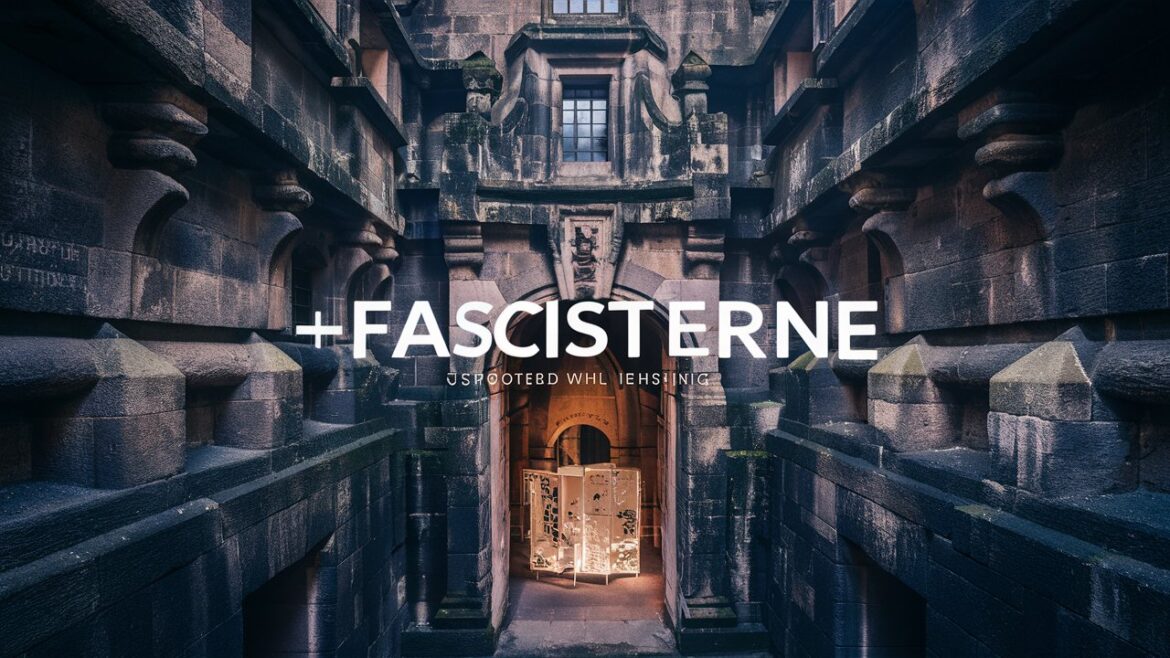
Introduction to Fascisterne
The term “Fascisterne” is the Danish plural form of the word fascist, which refers to individuals who support or adhere to fascism. To understand Fascisterne, it is necessary to go beyond the direct translation and examine the ideology, historical contexts, political movements, and cultural consequences associated with fascism itself. Fascism emerged as a powerful and destructive force in the twentieth century, particularly in Italy and Germany, before spreading its influence to many other parts of the world.
The Fascisterne were not merely political actors but participants in a movement that shaped wars, regimes, and societies in ways still felt today. By exploring the origins, characteristics, and modern implications of fascism, we can gain a deeper understanding of how Fascisterne influenced history and why the term remains relevant in contemporary debates.
The Historical Origins of Fascism
Fascism as a political ideology was born in the aftermath of the First World War. Europe in the early 20th century was marked by widespread disillusionment, social unrest, economic crises, and a longing for national renewal. In Italy, Benito Mussolini founded the National Fascist Party in 1921, drawing on a combination of nationalism, authoritarianism, and anti-socialist rhetoric.
The term itself comes from the Latin fasces, a bundle of rods bound together around an axe, symbolizing unity and authority. From this imagery, the idea of Fascisterne arose: individuals committed to restoring national greatness through obedience, discipline, and the rejection of liberal democracy.
Core Principles of Fascisterne
The Fascisterne were defined by their adherence to several central ideas. First, they believed in the supremacy of the nation or the race above individual rights. This collectivist view rejected the liberal emphasis on personal freedoms in favor of submission to a powerful state. Second, the Fascisterne embraced authoritarian leadership, often embodied by a charismatic dictator.
Third, they opposed communism and socialism, which they viewed as threats to national unity. Finally, they were militaristic, glorifying war as a tool to strengthen the nation. These principles created a rigid, hierarchical society where dissent was suppressed and conformity was demanded.
Fascisterne in Italy: Mussolini’s Regime
The Italian Fascisterne under Benito Mussolini provided the first example of fascism in action. Mussolini, once a socialist, shifted his ideology toward nationalism and authoritarianism. He established a one-party dictatorship that dismantled democratic institutions, controlled the press, and used propaganda to solidify power.
Mussolini’s Fascisterne promoted a corporatist economic model, where industries and workers were organized under state supervision to prevent class conflict. The regime also pursued imperial ambitions, exemplified by the invasion of Ethiopia in 1935. Italian Fascisterne were not only political agents but also cultural figures who sought to reshape Italian identity, glorifying Rome’s ancient past as a symbol of national destiny.
Fascisterne in Germany: The Rise of Nazism
In Germany, the Fascisterne took a more extreme and destructive form through Adolf Hitler’s National Socialist German Workers’ Party (NSDAP). While Nazism shared many elements with Italian fascism, it placed a much stronger emphasis on racial ideology, anti-Semitism, and expansionism. The German Fascisterne, known as the Nazis, propagated the idea of Aryan supremacy and pursued policies that led to the Holocaust and the devastation of World War II.
Unlike Mussolini’s corporatism, the Nazis mobilized society through a racial hierarchy, aiming to eradicate groups they considered undesirable. The German Fascisterne left a catastrophic legacy, shaping global politics and morality in the aftermath of 1945.
Fascisterne Beyond Italy and Germany
Although Italy and Germany produced the most infamous fascist movements, Fascisterne also appeared in Spain, Hungary, Romania, and other countries during the interwar period. In Spain, Francisco Franco’s Fascisterne emerged victorious after a brutal civil war, establishing a dictatorship that lasted until the 1970s. In Eastern Europe, groups like the Iron Guard in Romania adopted fascist principles with local variations, often emphasizing religious nationalism alongside authoritarianism.
Even outside Europe, elements of fascist ideology inspired movements in South America, Asia, and Africa. The global spread of Fascisterne demonstrates how the ideology resonated with societies experiencing turmoil, instability, and resentment toward liberal democracy.
Fascisterne and Propaganda
 One of the most important tools of the Fascisterne was propaganda. Fascist regimes mastered the use of mass media, symbols, and cultural imagery to influence public opinion. Mussolini’s Italy used radio broadcasts, films, and architecture to promote fascist ideals, while Hitler’s Germany went even further by creating a highly organized propaganda machine under Joseph Goebbels.
One of the most important tools of the Fascisterne was propaganda. Fascist regimes mastered the use of mass media, symbols, and cultural imagery to influence public opinion. Mussolini’s Italy used radio broadcasts, films, and architecture to promote fascist ideals, while Hitler’s Germany went even further by creating a highly organized propaganda machine under Joseph Goebbels.
The Fascisterne utilized posters, rallies, and slogans to foster loyalty and suppress opposition. They also manipulated education systems, ensuring that younger generations were indoctrinated with fascist values. By monopolizing culture, the Fascisterne were able to create a sense of unity and mobilization that transcended traditional politics.
Fascisterne and Violence
Violence was not just a byproduct but a fundamental component of fascist ideology. The Fascisterne glorified war, physical strength, and aggression as virtues necessary for national renewal. Paramilitary groups, such as Mussolini’s Blackshirts and Hitler’s Brownshirts, intimidated political opponents and enforced obedience.
These organizations embodied the fascist belief that violence could solve social conflicts and purify the nation. The Fascisterne also used state-sponsored terror, secret police, and concentration camps to suppress dissent and eliminate perceived enemies. In this sense, violence was both a means of political control and a cultural ideal.
Economic Policies of Fascisterne
The economic approach of the Fascisterne was complex, often combining elements of capitalism and state intervention. Fascist regimes rejected both laissez-faire economics and Marxist socialism. Instead, they pursued corporatism, where industries and labor unions were integrated into state-controlled organizations.
The goal was to maintain class harmony while maximizing national production. While some industries thrived under fascist rule, the overall economic policies were often unsustainable, relying on military expansion and the exploitation of conquered territories. Ultimately, the Fascisterne saw the economy not as an independent sphere but as a tool for achieving national strength and military power.
Cultural and Social Dimensions of Fascisterne
The Fascisterne sought to transform not only politics but also culture and society. They promoted traditional gender roles, glorifying motherhood and family as essential to the survival of the nation. Women were often excluded from political life and encouraged to focus on raising children for the state. The Fascists also emphasized youth movements, such as the Hitler Youth and Italy’s Opera Nazionale Balilla, which indoctrinated children with fascist values. Cultural production was carefully monitored, with art, literature, and music serving as instruments of propaganda. In this way, the Fascists attempted to reshape everyday life according to fascist ideals.
The Downfall of Fascisterne
The downfall of the Fascisterne was closely tied to the outcome of World War II. Mussolini’s regime collapsed in 1943 after a series of military defeats, while Hitler’s regime ended in 1945 with Germany’s unconditional surrender. The Fascists who had once dominated European politics were defeated on the battlefield and discredited in the eyes of the world. The destruction they caused—millions of deaths, widespread devastation, and moral atrocities such as the Holocaust—ensured that fascism would be remembered as one of the most destructive ideologies of modern history.
Fascisterne After World War II
After the war, fascism was officially discredited, but the Fascisterne did not disappear entirely. In some countries, former fascists rebranded themselves under new political movements, often emphasizing nationalism without overtly embracing fascist symbols. Neo-fascist groups emerged in Europe, Latin America, and elsewhere, keeping aspects of the ideology alive. While these movements were generally weaker than their predecessors, they demonstrated that the appeal of fascist ideas—particularly nationalism, authoritarianism, and anti-communism—remained potent in certain contexts. The legacy of the Fascisterne therefore continued to influence politics long after 1945.
The Memory of Fascisterne
The memory of the Fascisterne is preserved in historical scholarship, public debates, and cultural representations. Monuments, museums, and educational programs remind new generations of the dangers of fascism. However, the interpretation of Fascisterne varies by country. In Germany, there is a strong culture of remembrance and condemnation of fascist crimes. In Italy and Spain, debates about fascism’s legacy are more complex, with some groups still attempting to rehabilitate aspects of the regime. The way societies remember Fascism influences contemporary politics, shaping attitudes toward nationalism, authoritarianism, and democracy.
Fascisterne in Modern Politics
In modern times, the term Fascisterne is often used to describe far-right movements or individuals who exhibit authoritarian tendencies. While not all contemporary right-wing groups are truly fascist, many adopt elements reminiscent of fascist ideology, such as nationalism, xenophobia, or hostility toward liberal democracy. Critics warn that the persistence of such movements demonstrates that the lessons of the 20th century must not be forgotten. On the other hand, some argue that overusing the term Fascisterne risks diluting its meaning. What is clear is that the specter of fascism continues to haunt political discourse worldwide.
The Danger of Misunderstanding Fascisterne
A key challenge in discussing Fascisterne lies in distinguishing between historical fascism and its modern echoes. While contemporary populist movements may share certain features with fascism, they are not identical to Mussolini’s or Hitler’s regimes. Careless use of the term risks trivializing the crimes of the past. At the same time, ignoring genuine fascist tendencies can allow authoritarianism to grow unchecked. Understanding the, therefore, requires careful historical analysis, nuanced political judgment, and vigilance against attempts to distort or misuse the term.
Fascisterne and the Digital Age
The digital era has given new opportunities for Fascisterne to spread their ideology. Online platforms allow extremist groups to disseminate propaganda, recruit followers, and organize activities across borders. Internet memes, forums, and social media echo many of the strategies once used by the fascist propaganda machines of the 1930s, albeit in updated forms. Modern Fascisterne may not march in the streets as visibly as their predecessors, but their influence can still be significant in shaping political attitudes, especially among younger generations. This raises important questions about freedom of speech, online regulation, and the resilience of democratic institutions.
Lessons from the Era of Fascisterne
The history of the Fascisterne offers crucial lessons for today. It demonstrates the dangers of political extremism, unchecked nationalism, and the erosion of democratic institutions. Fascism did not rise out of nowhere; it grew in conditions of crisis, polarization, and social discontent. Recognizing these conditions in the present helps us guard against similar dangers. The legacy of the Fascisterne serves as both a warning and a reminder of the importance of protecting democracy, human rights, and the dignity of all people.
Conclusion
The story of the Fascisterne is not just a chapter of the past but an ongoing part of global history. Their ideology, practices, and legacies continue to influence political debates, cultural memory, and even modern extremist movements. Understanding the Fascisterne means recognizing both their destructive power and the resilience of societies that resisted them.
By studying their rise and fall, we gain insight into how fragile democracy can be and how essential it is to remain vigilant against authoritarianism. Ultimately, the history of the Fascisterne reminds us that freedom and justice are never guaranteed but must be actively defended by every generation.
Also Read: NLPadel


